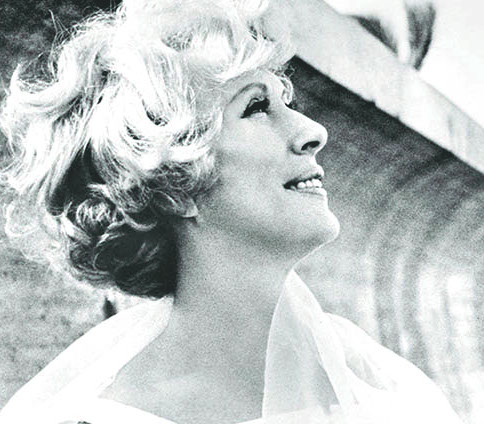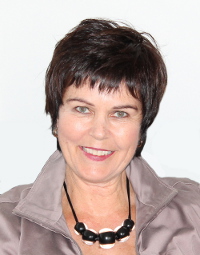Impacting a corporate culture
A four-year case study at Estée Lauder
Bringing the best to everyone we touch
 Estée Lauder founded her company in 1946 armed with four products and an unshakeable belief that every woman can be beautiful. Today, more than 60 years later, that simple notion has changed the face of the beauty business. Her leadership inspired thousands of people and she received scores of honours including the United States’ Presidential Medal of Freedom and France’s Legion of Honour. Perhaps her most important legacy was her belief that in order to make a sale, you must touch the customer.
Estée Lauder founded her company in 1946 armed with four products and an unshakeable belief that every woman can be beautiful. Today, more than 60 years later, that simple notion has changed the face of the beauty business. Her leadership inspired thousands of people and she received scores of honours including the United States’ Presidential Medal of Freedom and France’s Legion of Honour. Perhaps her most important legacy was her belief that in order to make a sale, you must touch the customer.
 Today the Estée Lauder Companies’ products are sold in more than 135 countries and territories. The company has gained a worldwide reputation for elegance, luxury, and superior quality, and today are actively involved in the pink ribbon breast cancer awareness campaign among others.
Today the Estée Lauder Companies’ products are sold in more than 135 countries and territories. The company has gained a worldwide reputation for elegance, luxury, and superior quality, and today are actively involved in the pink ribbon breast cancer awareness campaign among others.
Estée Lauder companies, New Zealand
In 2006, under the guidance of General Manager, Marie-Ann Billens, ELC NZ decided to embark on a journey to become an Investor in People.* The initial diagnostic identified that the culture of the company was already very people-focused, but strong loyalty to the individual brands almost conflicted with the culture of the NZ affiliate. A need for development in some areas was identified: leadership, interpersonal communications, and increasing sales in the affiliate brands.
 Human Resources Manager, Sandra Lyon comments, “Back then I was new to the business and I could sense the culture was full of passionate people who loved what they did, and the products they sold. However I also recognised there were challenges – particularly in the areas of performance management and growing leaders for the future.”
Human Resources Manager, Sandra Lyon comments, “Back then I was new to the business and I could sense the culture was full of passionate people who loved what they did, and the products they sold. However I also recognised there were challenges – particularly in the areas of performance management and growing leaders for the future.”
* Investors in People is a flexible and easy-to-use standard which helps organisations transform their business performance.
What is culture?
Sandra describes culture as, “The way we do things around here, which also embodies the original vision of Estée Lauder herself – bringing the best to everyone we touch. We embarked on a series of initiatives to continue and improve on things we did well, and at the same time tackling and addressing the things we didn’t!”
Introducing TetraMap
 Already known to the business was Auckland-based HR and training consultant Jan Alley, now a TetraMap Master Facilitator. Jan was enlisted to design a series of development initiatives, including a 10-month programme to develop Emerging Leaders by using internal expertise. She introduced TetraMap as an underpinning model throughout the Emerging Leaders programme, and into many of her other workshops.
Already known to the business was Auckland-based HR and training consultant Jan Alley, now a TetraMap Master Facilitator. Jan was enlisted to design a series of development initiatives, including a 10-month programme to develop Emerging Leaders by using internal expertise. She introduced TetraMap as an underpinning model throughout the Emerging Leaders programme, and into many of her other workshops.
Sandra takes up the story from there. “Initially I was pretty sceptical. I couldn’t see how such a simple model could stick and be used throughout the business at all levels. However, because I trusted Jan’s judgment I agreed. Very quickly I noticed how many people were talking about it, and those that hadn’t been TetraMapped wanted to know when they could learn about it!”
Comments from the participants on the Emerging Leaders programme included:
- “I now recognise the different behaviours and power within the team.”
- “It has added to self-analysis and learning and interacting with other types.”
- “TetraMap has increased understanding of – and others interpretations of – situations.”
Investors In People award
In 2009, Estée Lauder NZ achieved the Investors In People award. A quote from the IIP Recognition Report highlights: “TetraMap is now common language amongst all staff to not only understand their own working style but also those of their colleagues. This has provided the platform to openly challenge and improve working habits and behaviours at the individual level and within teams.”
ELC NZ now uses TetraMap in the following areas of people development:
- Emerging Leaders
- High Touch High Performers Sales Development Induction
- Counter Managers’ Conferences
- Sales Training
- Strategic Planning
- Coaching
- Performance Management
Global perspective
The ELC NZ Leadership team has also used the TetraMap framework to help drive the strategic focus of the business, and to identify how they are adding value into the global corporation.
Estee Lauder Case Study
Estee Lauder Case Study 214.35 KB 248 downloads
